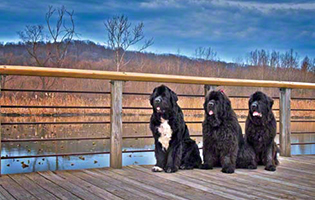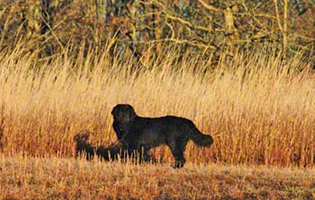Understanding and managing the reproductive cycles of dogs is essential for both their health and the smooth running of a household. Recent research and expert recommendations emphasize that delaying spaying or neutering until a dog’s growth plates have closed—around 24 months—can offer long-term health benefits. This decision, while sometimes counterintuitive to common practice, is especially important for large or giant breeds such as Newfoundlands, whose growth and reproductive milestones differ markedly from smaller dogs.
Delayed Spaying and Neutering
The timing of spaying or neutering has shifted as veterinary research has shown that early sterilization may affect overall development. Waiting until the growth plates close, typically at about 24 months, ensures that the bones and joints develop properly. This period of continued growth not only contributes to a robust skeletal structure but also minimizes potential orthopedic complications later in life. Even for dogs that are not intended for breeding, this approach is now considered a healthier alternative, allowing the animal to mature fully before undergoing any surgical intervention. This shift towards older sterilization means that more and more households are living with intact animals during sexual maturity, so need to understand how to manage males and females during that time.
Understanding the Heat Cycle
Female dogs, or “bitches” experience regular heat cycles, and these cycles are an important aspect of canine physiology. Heat cycles can vary in length from 1 to 4 weeks, with the average cycle lasting around 21 days. The frequency of these cycles can range from every 4 to 9 months, though most dogs will experience a cycle approximately every 6 months. For giant breeds like Newfoundlands, the onset of the first heat cycle tends to occur later than in smaller breeds. While many smaller dogs may experience their first heat as early as 6 to 9 months, Newfoundlands typically see this milestone at around 12 months, with some not entering heat until 18 months or even later.
Recognizing the Signs of Heat
Owners should be familiar with the early signs of a dog entering her heat cycle so that appropriate care and management can be provided. One of the most obvious physical signs is a swollen vulva accompanied by a bloody vaginal discharge. Establishing a routine of checking the dog each morning—using a white paper towel to dab her vulva—can help track the progression of her cycle and alert the owner to any unusual changes. Behavioral changes often accompany these physical symptoms. For instance, some dogs may display increased clinginess or moodiness, occasionally manifesting as growling or even initiating fights with other dogs in the household. Additionally, there may be a noticeable shift in interest towards human interactions and a stronger desire to roam, as the dog instinctively seeks out potential mates.
Managing a Female in Season
When a female dog is in heat, her environment and routine may require adjustment to maintain her comfort and safety. One key recommendation is to ensure that the dog is kept within a secure enclosure or indoors, separated from other dogs. This precaution is particularly important, as intact males can detect a female in heat from a significant distance—up to over a mile away—and the scent can easily lead to unwanted mating or conflicts with other intact females.
A practical measure to reduce mess during a heat cycle is the use of doggie diapers. Many pet owners find that repurposing men’s briefs—with the dog’s tail threaded through the opening—serves as an effective, washable panty for managing discharge on hard-to-clean surfaces. However, it is important that these coverings are used only when necessary, as allowing the dog sufficient time without them enables her to clean herself properly and maintains proper airflow, reducing the risk of infections.
It is also advisable to create a dedicated space for the dog during her heat. This area should include her own food and water bowls, a comfortable bed, and any other items that help her feel secure. Balancing attention and solitude is essential, as some dogs may crave extra affection during this time while others prefer to be left alone. Additionally, practical steps such as closing the windows can be beneficial. By limiting the escape of her scent outside, the risk of attracting wandering males from the neighborhood is minimized.
Post-Heat Considerations
For pet owners who decide to spay their dog, timing is critical. Scheduling the spay procedure 2 to 3 months after the heat cycle has concluded is recommended. This waiting period allows the body to normalize after the hormonal fluctuations and ensures that all engorged blood vessels have returned to their normal state, thereby reducing the risk of excessive bleeding during surgery.
Managing an Intact Male
The behavior of intact males requires its own set of management strategies. One common challenge is the behavior of leg-lifting or marking indoors. This behavior, although instinctive, can become a habit if not addressed early. Owners are encouraged to reinforce basic housebreaking training by keeping a close eye on the dog, using a short leash indoors if necessary, and correcting the behavior promptly. If constant supervision is not possible, a belly band can be a useful tool to manage the mess and odors until the dog learns that marking is only acceptable outdoors.
Humping behavior is another issue that can arise with intact males. Although often interpreted as a sexual behavior, in many cases—especially among younger dogs—it is more a result of overexcitement. This behavior is not confined to intact males; neutered males and spayed females may also exhibit it. Redirecting the dog’s attention through play, training, or puzzle toys can help in reducing this behavior. While it may be possible to train the dog to refrain from humping people or inanimate objects, it is important to recognize that the behavior might resurface during energetic interactions with other dogs.
The presence of a female in heat in the vicinity can intensify certain behaviors in intact males, such as loss of appetite, restlessness, and increased vocalizations like howling. In some cases, males may also exhibit more frequent marking or attempts to escape in search of a mate. Providing extra leash walks, training sessions, and playtime can alleviate some of the stress, but these symptoms typically subside once the female is no longer in heat.
Balancing Household Dynamics
When both intact males and females are present in a home, the dynamics can become particularly challenging during a heat cycle. It might be necessary to consider temporary arrangements, such as boarding the male at a kennel or having him stay with a friend or family member. This separation can significantly reduce the stress for all dogs involved and help prevent accidental pregnancies. Ultimately, the goal is to create an environment that respects the natural drives of the animals while ensuring their well-being and the harmonious operation of the household.
In summary, effective management of a dog’s reproductive cycle involves a blend of careful observation, proper scheduling of surgical procedures, and strategic behavioral management. Whether it is delaying spaying or neutering until the dog is fully grown, recognizing the physical and behavioral signs of heat, or managing the specific challenges presented by intact males, the approach must be comprehensive. Through a combination of secure enclosures, thoughtful routines, and appropriate interventions, pet owners can ensure that their dogs remain healthy, comfortable, and well-behaved throughout the various stages of their reproductive life. This responsible approach not only benefits the individual animal but also contributes to a more harmonious living environment for all pets in the household.
For additional information on this topic please see:

